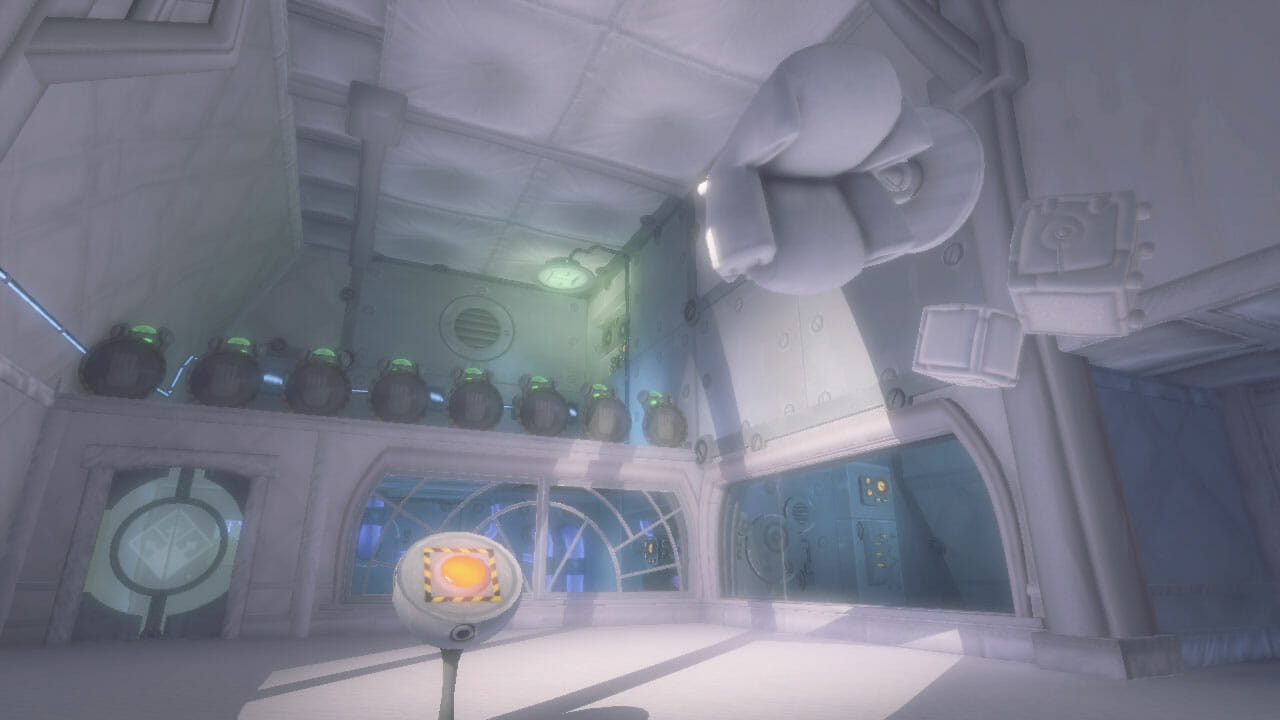Quantum Conundrum (Multi-Platform)

Portal designer Kim Swift returns with a game that feels somewhat familiar…
It makes sense that an industry that works hard to present its works as coherent, self-contained universes would (intentionally or not) strive to hide their nature as authored spaces. Those rules and models are no less authored than the sentences of a novel—they’re just reactive.
Auteur theory is messy because it’s too neat: it wedges works created by multiple people into a mode of single-authorship, a Great Man (when it was developed for film, it was applied solely to men) approach to understanding a work. And because how we understand a work affects how we understand how it was made, it carries a lot of power in the production of things. It narrativizes creation, gives it a single, active protagonist.
I mention this because I know it’s reductive for me to talk about Quantum Conundrum without talking about Kim Swift, and Valve’s Portal, and Portal 2. But it’s good that I can’t evaluate this in a vacuum, right?
![]()
Swift was part of a student team from DigiPen that was hired by Valve a few years ago. Their project, Narbacular Drop, was massaged into Portal. About two and a half years ago, a few years after the release of Portal, Swift left valve for Airtight Games.
Quantum Conundrum is the second game from Airtight. Their previous game, Dark Void, was set in a world of zeppelins and flying machines, and involved flight by jetpack. Quantum has very little to do with this.
Instead, it’s structurally almost identical to Portal. You move through a giant facility segmented into a series of areas filled with environmental puzzles. These spaces have an in-game author (in Quantum, your bachelor-mad-scientist uncle) whose disembodied voice accompanies the player through the challenges.
But where Portal was about changing spatial relationships by punching holes in the world, essentially bringing two points together, Quantum is about changing its physics. There’s an explanation about different dimensions, and how you’re opening rifts that cause these other dimensions to take the place of the normal one. The explanation is irrelevant, but that’s ok: it’s there to explain why you can’t shift into each of the four dimensions in every area.
In the Fluffy Dimension, everything is “ten times lighter”, which in practice means that you can pick up safes and nothing is heavy enough to break glass. Stand on top of a safe in front of a fan and switch to Fluffy Dimension and you and the safe go sailing through the air.
In the Heavy Dimension, everything is “ten times heavier”, which means cardboard boxes can break panes of glass (which are apparently not affected by the dimensional shift) and lasers (there are lasers) can’t destroy items. There’s a dimension where time is slowed down (allowing you to more easily jump between the fast-flying furniture that serves as the game’s platforming) and one where gravity is reversed (turning safes and couches into makeshift elevators as they fly toward the ceiling).
-

-

-

-

-

-

-

-

-

-

-

-

-

-

-

-

-

-

-

-

-

-

-

-

-

-

-

-

-

-

-

-

-

-

-

-

-

-

-

-









































